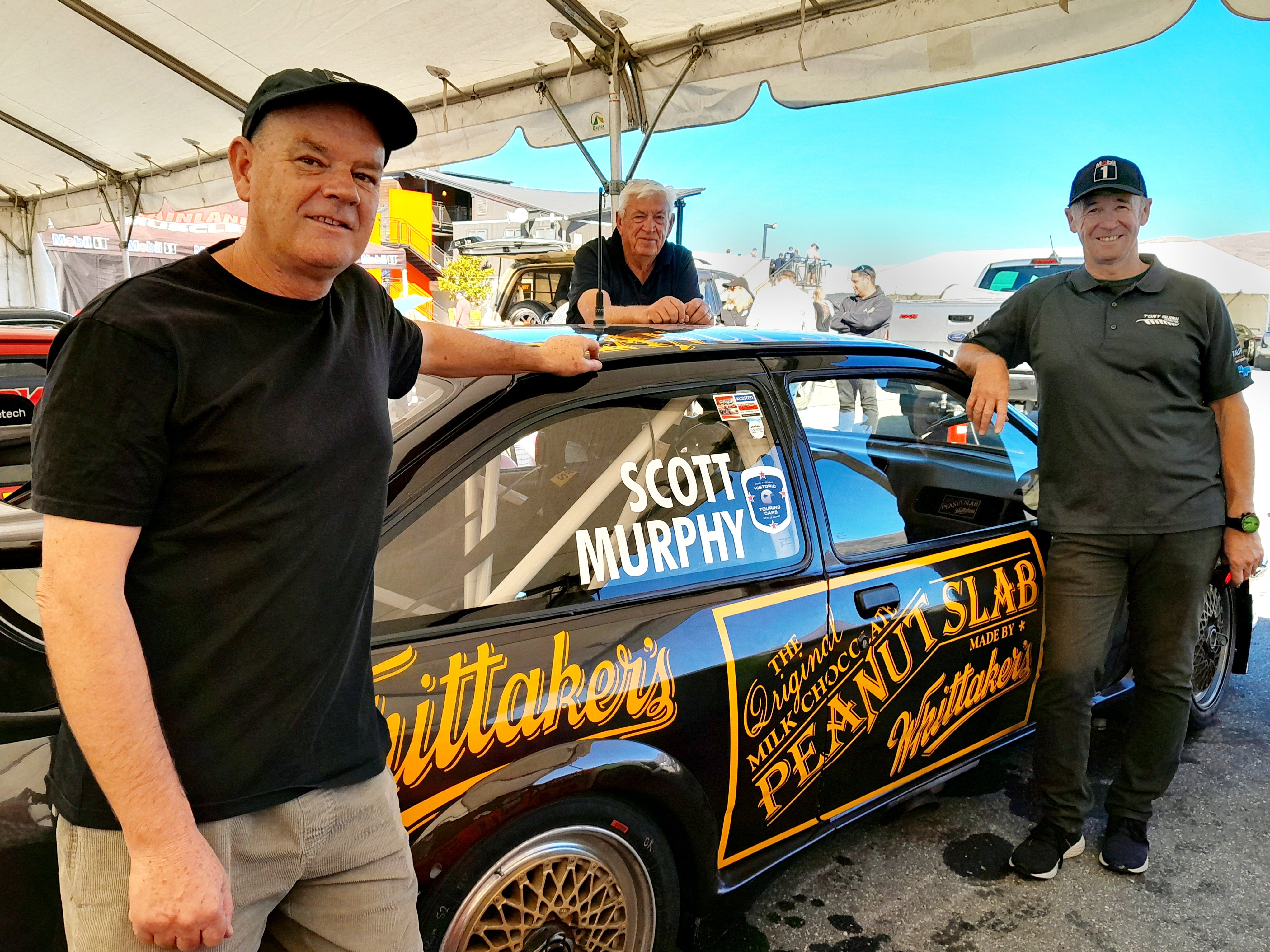
At the weekend, retired motorsport champions Kayne Scott and Greg Murphy reunited with a 1988 factory-built Ford Sierra RS500 that shocked the daylights out of them when they were in their 20s.
In 1992, they were just "puny kids with mullets down to the waist and no idea" when they drove it in the Wellington Street Race, Scott joked during the Highland Festival of Speed in Cromwell yesterday.
Back then, they shared the driver’s seat to get the Peanut Slab over the line in second place overall.
Yesterday, Scott drove the Slab to victory in the festival’s first Historic Touring Car category race.
"This is a famous car from the group A era from the early ’90s, when both Greg and I were both in our 20s ...
"It is a car that was prominently campaigned and in its heyday the [Whittaker’s] Peanut Slab livery was well recognisable", Scott, now 55, recalled.
"It was evil. It is a very difficult car to drive. The thing is, when you’re young, you haven’t had that 25 years’ experience. Your knowledge of how to churn a car isn’t what it is today", he said.
"These days, we hop out and can say ‘this is what we are going to change’. This is a lovely car to drive now."
Even so, the turbocharged, small-wheeled car would never be easy to drive.
"But I give it a kiss every time I go for a run, don’t worry. Occasionally, it snarls at me and sometimes it gives me a hug", Scott said.
Murphy agreed evil "is a good description".
"It scared the living daylights out of me. But I didn’t know any different either. I think it is a much nicer bit of a beast now."
The 1992 race in Wellington was Murphy’s first foray into touring car racing. Scott had debuted in the Peanut Slab with Brett Riley in 1991.
"These days, you wouldn’t be so stupid, would you, to go from what I was doing, single-seater stuff, much slower kind of cars, to driving a car that had a reputation for being a real demanding, difficult car to drive", Murphy said.
After the 1992 drive, Murphy did not get into the Slab again until 2022.
"When we first drove it in 2022 in Pukekohe, it reminded me vividly what it was like in 1992 and I thought ‘Yep, it is exactly the same’. We have used a little bit of knowledge since then to improve it, but it is still demanding.
"It has a lot of horsepower, is quite a high car, the dynamics are unusual, and it has quite a small tyre for the horsepower it’s got. You have got to have your wits about you when driving it", he said.
The car was brought into New Zealand by racing car driver Mark Petch in 1988.
Peter Sturgeon, of Christchurch, bought it about two years ago from Andy Greenslade.
Mr Sturgeon entered it into the Historic Touring Car Masters series and Scott, who gave up motorsports years ago, had to renew his long-expired racing licence specially for the competition.
Scott said Highlands had not existed when he left motorsport and the weekend was his first time on the "highly challenging" track.
Mr Sturgeon, a former V8 driver, said he would much rather be team manager and "social secretary" than drive the Slab.
But he wanted to bring the car to Cromwell for the first time because of the camaraderie and friendships made over the years.
Mr Sturgeon also loved that young drivers were watching and learning from Scott and Murphy.
"I would have to rate this. I have been to a lot of tracks in the world — Australia, Europe, England — and this here would be the most picturesque I’ve been to", he said.
The Whittaker’s logo on the car was part of history and not sponsorship, he said.
The numbers
Ninth Highland Festival of Speed
• 3 days
• 141 racing cars, drivers
• 4.2km track lap
• 28,695 laps over 3 days
• 1562 coffees (minimum)
• 2000 spectators













